Atomic Rooster- Death Walks Behind You
Two pressings: US and UK
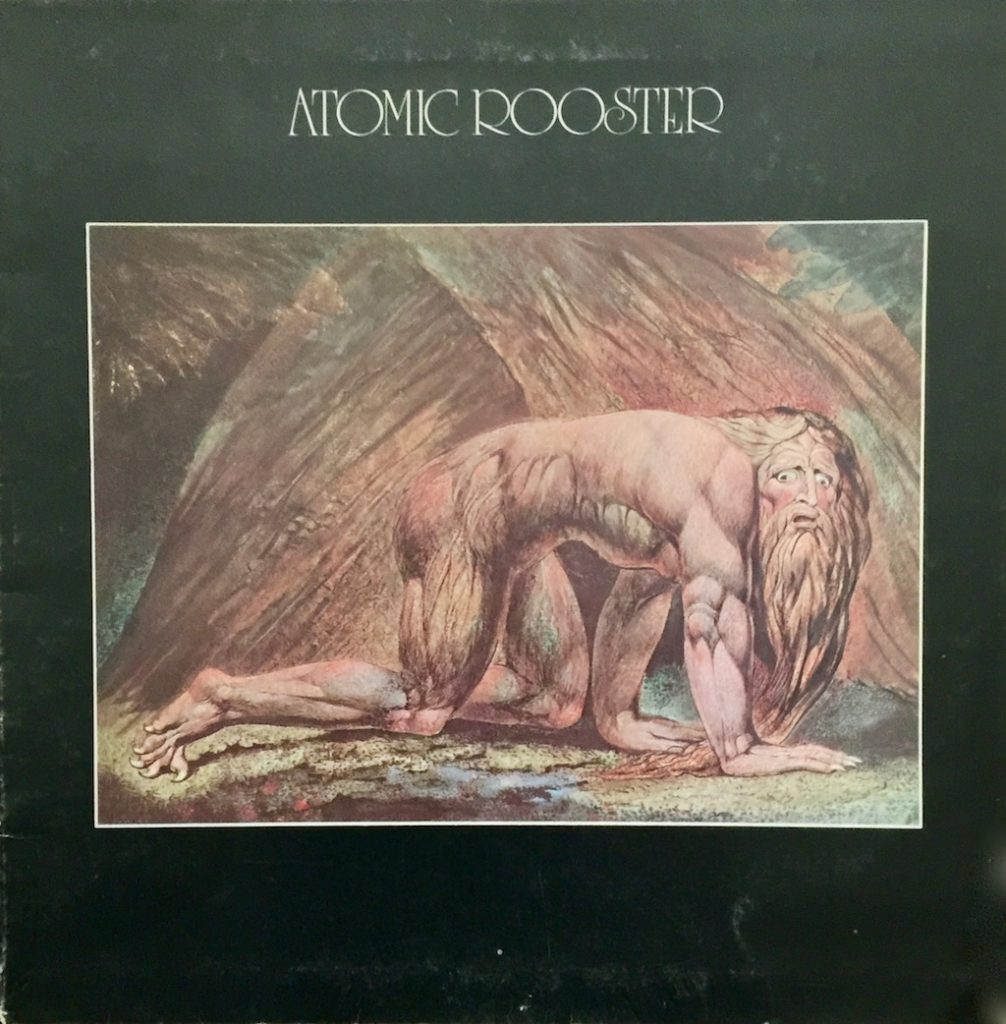
An interesting heavy rock record by an oft-overlooked band, this album—which was probably their best and most commercially successful– has gotten some play here lately. I decided to buy both early US and UK pressings—the price difference can be considerable for those of us in the States—to see how they compared. The UK clearly wins on artwork, with its disturbing William Blake image (above).
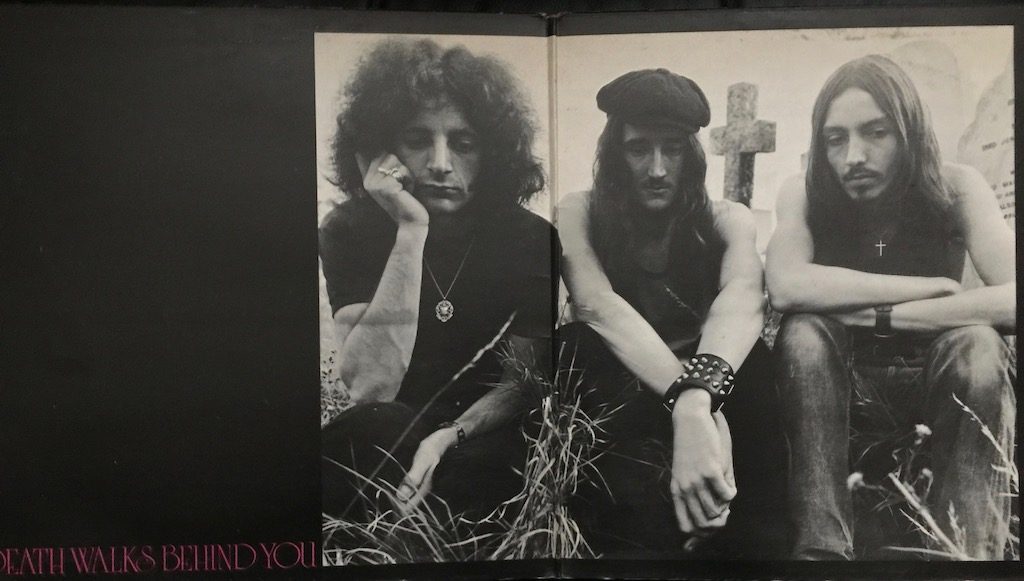
The band grew out of The Crazy World of Arthur Brown—a strange piece of wackiness that resulted in a radio hit, “Fire” and an early black and white “music video” from Top of the Pops; capturing the singer with his trademark metal helmet spouting fire—as he sang “I am the God of Hellfire” and danced to a prominent, distinctive[1] organ sound wearing heavy make up and a robe. The band was disguised in costume as well. A bit of theatrical stage business that anticipated Alice Cooper, Kiss and other “shock” acts, Brown moved in serious musical circles in these early days, and shared billing with top tier of rock acts at the time. (He later moved to Austin, TX and recently played here).[2]
Vincent Crane played the Hammond and was joined by Carl Palmer (of later ELP fame), who replaced the original drummer. Those two formed Atomic Rooster, but by the time the band’s second album, Death Walks Behind You, was recorded, Palmer had moved on, drummer Paul Hammond stepped in and guitarist John (Du)[3]Cann was added. There was no bass player.[4]
The Album- track by track
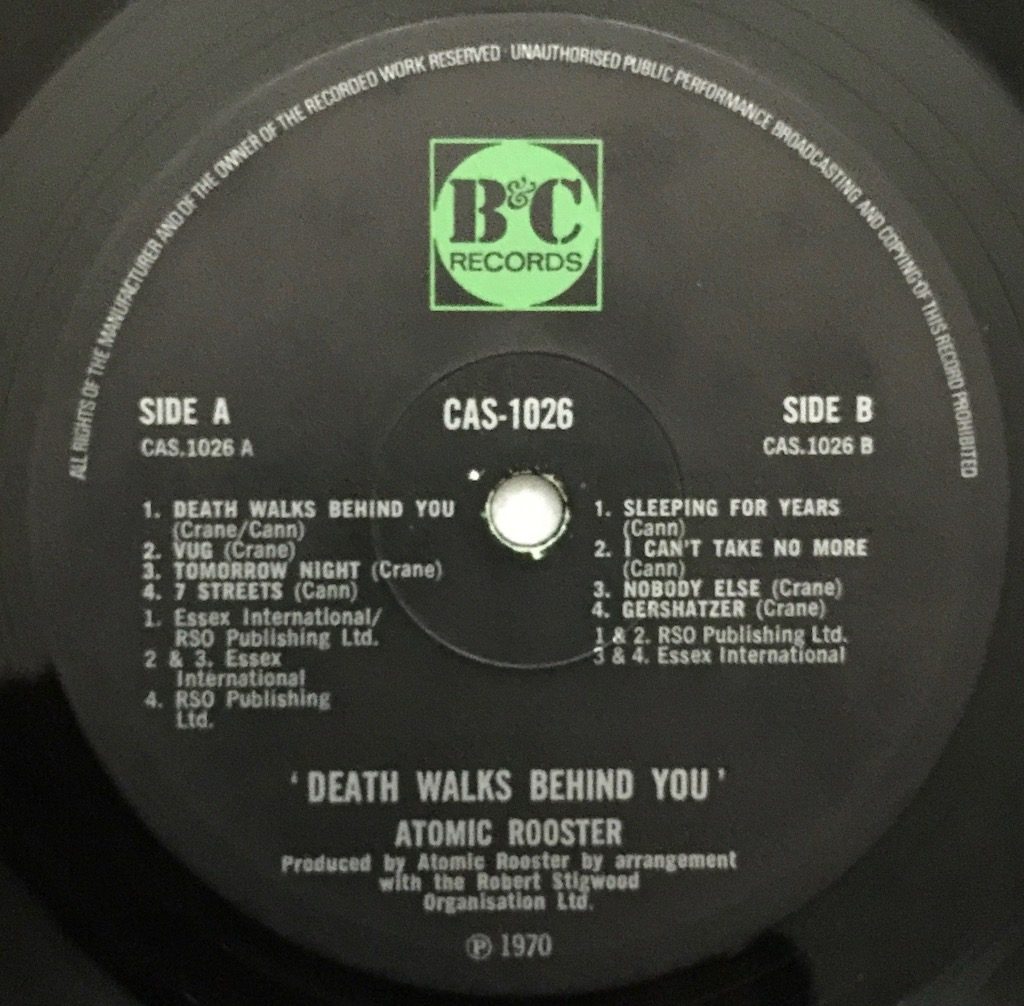
side one
A.1.The title song has deep piano with lots of harmonic overtones that leads into a heavy romp, telegraphed lead vocals and beautiful background voices. The song and performance capture everything right about this band; the guitar almost squawks as it rips into lead parts, then backs off and sings like a humming, electrified wire. The drumming is impeccable.
A.2. “Vug” is keyboard complexity on the intro, with the band following, and they break down into a series of cascading ledges—drum fills—then back to the main theme. This has a jazzy aspect to it, except it’s dark, and as the organ descends the scale, and the guitar winds upwards we’re greeted with an organ solo so characteristic of the period; there was a certain style to playing a Hammond organ in a hard rock band that is like a lost art. The song continues in this vein at a faster tempo; if any track on the album deserves the “prog rock” label, it’s this one, but of the heavy rock variety.
A.3. “Tomorrow Night” – classic sound, like wood being sawed against the grain, this song has an edge that sounds like it is being ripped from the raw material. Organ and vocals poke through a cowbell accented refrain- the drums sound fantastic on this track as do the organ flourishes. We end with spacey sounds.
A.4. “7 Streets”—heavy organ starts the proceedings, with slow dark ritual, but the guitar parts quickly change the mood—and a haunted voice rides above some great riffs—very dramatic dark piece; the drumming is again sensational. The guitar and organ do a “call and response” that would have been a crowd- pleaser live. This sound is characteristic of the era of post-psych, pre-metal heavy rock.
Vincent Crane is very much the heart of this band, and shines on this track—not just for his technical skill on the keyboards, but for his taste in playing classic hard rock style organ without resorting to the usual keyboard sweeps, soft/loud fills and slow/fast Leslie effects. He’s playing a more virtuoso part here and it shows. And he gets a very over-ripe sound from the organ, as mentioned in note 1, below.
side two
B.1. “Sleeping For Years” has a deranged quality led by the guitar. It’s an impressive display of showmanship and the hard driving backdrop is the stuff that metal is made of, except that instead of repetitive hammering, we get a very high level of musicianship.
B.2.“I Can’t Take No More” is another fast paced rocker—it has a breathless quality to the vocals and the pace of the band. (It also reminds a little of early Steppenwolf). Hammond’s drumming is impressive, and as the song builds, and the vocals sail above the driving force of the band, you have the best of all worlds- a fast moving rocker with the heaviness of something like Sabbath. This song gets better as it plays. I’m glad it’s on the album.
B.3.“Nobody Else” starts with spoken (well, shouting, barking) words that suddenly shift into a lyrical piano string duet. When the vocal parts come in, the song drops into an almost contemplative mood- “my whole world is fallen down/ gone away” – then, things crank up to a frenzy, with the guitar singing above the fray. We return to that beautiful duet with the guitar pushing the edge to the finish. The keyboard work is stunning.
B.4.“Gershatzer” is a bombastic, all hands on deck rocker from the get-go; that refrain is very familiar as Crane works the piano, the organ and things come to a quiet halt. Minor key piano work is gorgeous. This song includes the obligatory (for the period) drum solo.
Ÿ
I walked away from repeated listening of this album with a far greater appreciation of the genius of Vincent Crane, who wrote most of the songs and whose keyboard work is to be envied, not only for technical prowess but for tone and mood on both the organ and piano. Crane, sadly, suffered from serious mental health issues and was in and out of institutions, dying at a young age. Lost genius, and sorely underrated musician.
In the course of my research on the band, I came across a wonderful piece about Vincent Crane written by Colin Harper. Harper had been commissioned by Mojo to write it, but Mojo never published it. Colin Harper put it up on his site, and you can read it here.[5]
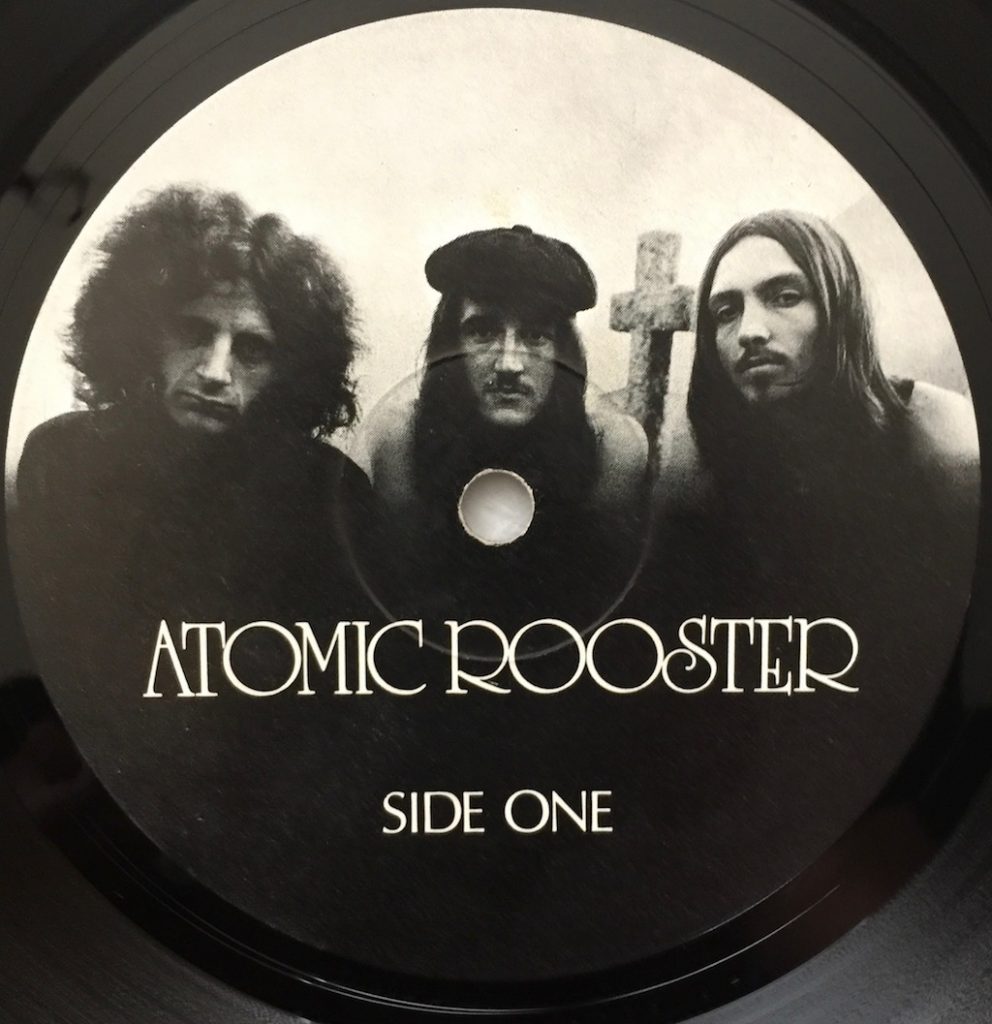
CAS 1026 A1 U/B1 U
UK Pressing
Let’s start with the UK pressing on the B&C label, a fairly obscure imprint with ties to Trojan Records, a well-known operation in reggae, dub and ska circles. “B&C” apparently stood for “Beat and Commercial” which differentiated it from the Caribbean- influenced output of Trojan and sought to capture some of the newer sounds popular in England at the time—which partly explains the “progressive’ moniker that is often slapped on this album.
The UK pressing is a nice piece of vinyl. I got my copy a little cheaper because the cover was a bit tatty, but the artwork is probably worth springing for a nice copy (or finding a better UK cover, which I’ll eventually do). It really sets the tone for the album.
Listening Notes on the UK copy
side one
A.1. Big, dark sound on the title track, the guitar sound has a muted quality (similar to Martin Barre of Tull).
It is clear in the comparison to the U.S. copy that this UK pressing is cut louder and is more dynamic.
I’m using an 80db “C” weighted average for normally ‘loud’ with 88db peaks—it’s loud but not too loud.
There’s more separation between the voice and band than on the US copy. You can also hear the chorus of backing vocals more clearly and the beat is more pronounced.
A.2. “Vug” is a complex piece—keyboard-centric—kick drum is more apparent, overall sound is darker and weightier than the U.S. copy. More richness to the keyboard sounds in the body of the song—that reedy, aharmonic tone characteristic of a Hammond is more apparent.
A.3 “Tomorrow Night” is like a full-on onslaught of drums and percussive effects on the organ with hard lead guitar toward the end. Lots of space among instruments and between them and the vocal part.
A.4. The dark gothic opening organ tones of “7 Streets” that leads into that guitar driven riff are fuller, the vocal has a more 3D quality and the overall effect is bigger and heavier than the US pressing. The drums are great on this track as well.
side two (UK) offers more of the same:
B.1. “Sleeping For Years” is very big and dynamic sounding on the UK copy. Far better sounding than almost any track heard so far on either album, purely in sonic terms. There’s real body to the drums, the organ is lush, and the vocals stand clearly in relief from everything else. The guitar is full bodied, with a hard enough edge, but no brightness.
B.2.“I Can’t Take No More”—the more I listen to this record, the more I like this track, which starts out seeming like nothing special, and then goes into a bouncy, hard driving rock song that is a perfect road tune. You can hear the strike of the piano in the background, the song just keep driving with a constant throb of bass tones and drums, and that lilting vocal.
B.3.“Nobody Else”—apart from the barking voice opening, this is probably the most beautiful piece of music on this record. The piano has grandeur, and when the guitar overlays with a mild string tone, it is stunning. This song has quieter passages, and I wish I had found an even cleaner copy of the UK-despite my usual deep cleaning, there is obvious evidence of previous plays, some light crackle that I usually don’t find acceptable in a record I care about. (Which means I’ll be looking for a better copy).
B.4.“Gershatzer”- this is another busy, keyboard-centric track. It has a nice warm sound in the first section, which is largely organ and drums, then switches to piano—great tone, weight and gravitas to the piano. The organ is fiery—and the tranquility of the piano is a respite by contrast. When the guitar part arrives, panned back and forth, and the organ speaks in trills, mumbles and flashes, you know this thing is leading up to something—the interlude breaks with the band coming back in with the main theme, then: DRUM SOLO!!!!! But, for sound hounds, you get good contrast between the cymbals, which are well fleshed out, the kick drum, snare and toms.
US Pressing
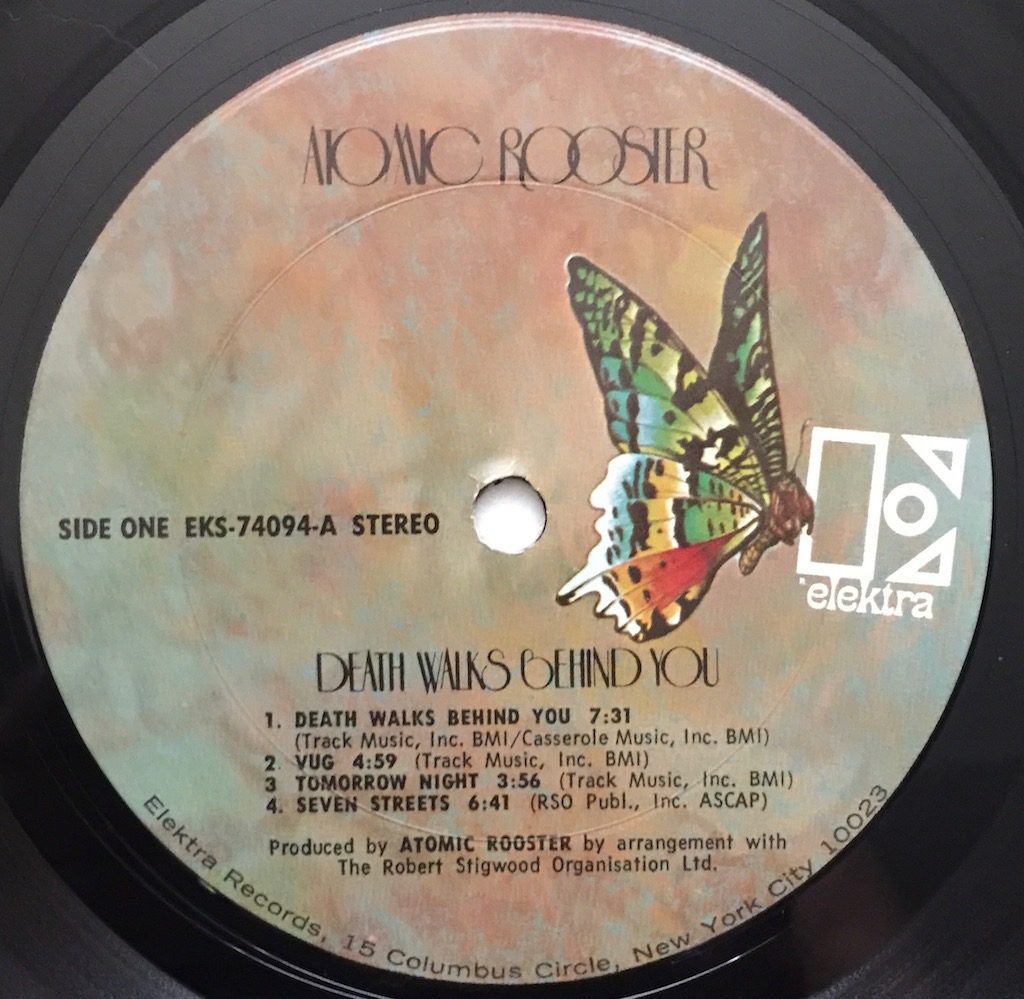
EKS 709 094 A RE CP Λ* esk/ B RE CP Λ* esk (likely Columbia Pittman, NJ)
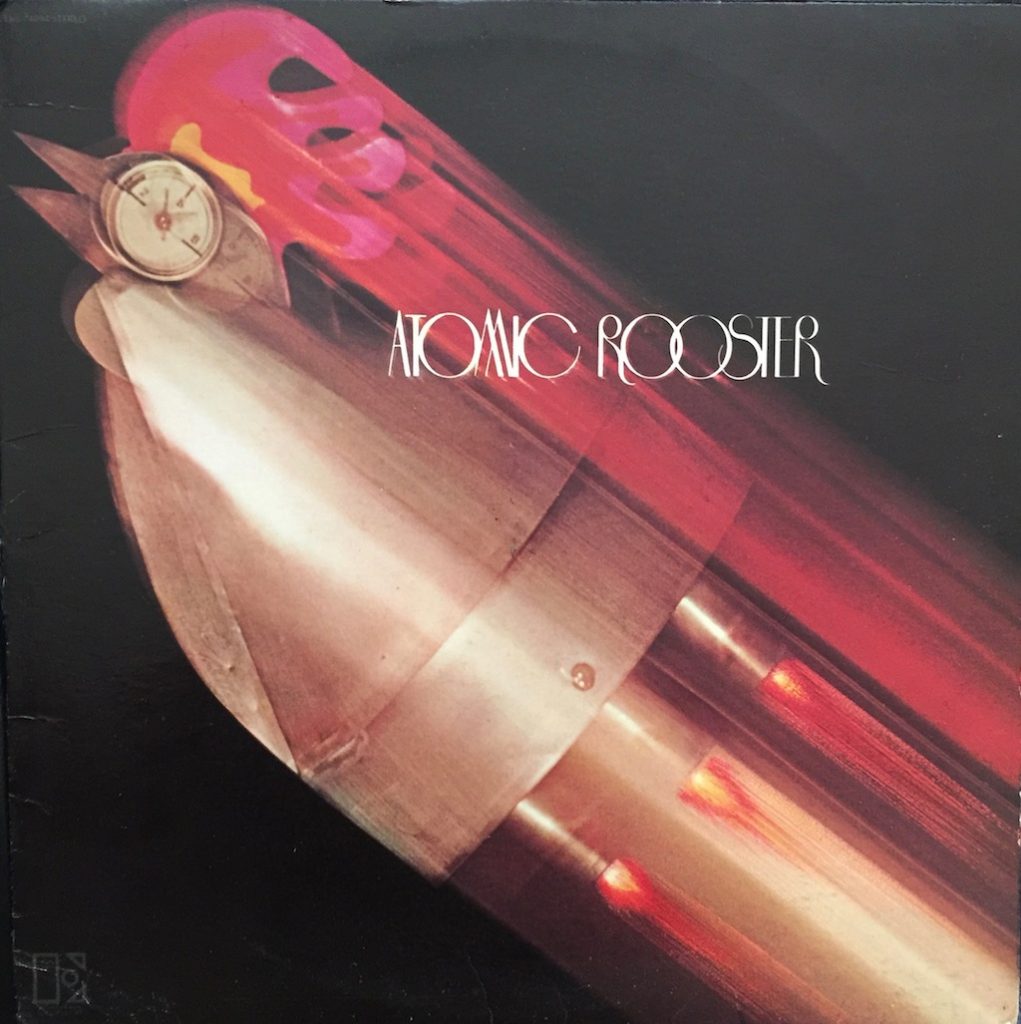
The biggest disappointment, before even listening to the thing, is the cover—it might be cool in its own right, but it just doesn’t have that wretchedly suffering Nebuchadnezzar, walking on all fours, from the William Blake print that graces the UK album jacket.
Listening notes on US copy
side one (US)
A.1. From the lead in groove, nice weight to the piano on the title track and as the song descends into that hard guitar driven riff, the sound is a little muffled (reminds me of the old pressings of Tull’s Benefit, but not as pronounced as the Tull record).
A.2. Second track,”Vug,” which is quite busy, is good sounding.
A.3. The piano beginning on track 3 “Tomorrow Night” is fine, weighty, good drum skin and “thwack”—
A.4. “Seven Streets”(spelled out on the U.S. copy, numerals on the UK)—nice dark, rich organ tones, you can hear phasey effects on the vocals; the guitar tone is good.
Overall, a very good sounding side, with some 3D quality and imaging, not too bright, and pretty acceptable to good sound, with the exception of the muted sound on the title track (which is evident on the UK pressing as well).
side two (US)
B.1. “Sleeping For Years”- switching between the UK and US copy, the latter sounds more tipped up on this track, lighter in weight, but not bright or harsh. It has good weight but it doesn’t have the same heft as the UK. The vocals are a little brighter, but not to the point of annoyance. Standing on its own, without comparison, this track sounds great.
B.2.“I Can’t Take No More”—the insistent drive of this song comes through loud and clear. Again, not as deep, dark or full bloom as the UK, but in its own right, this US track sounds fine. You can hear weight to the piano strikes. The vocals are well separated and distinct from the din being created by the band.
B.3.“Nobody Else”- Again, this gorgeous piano. Good weight on the US copy (which is a tad noisy too).
B.4.“Gershatzer”- the “to the max” track on this album, fine sounding, again lacking the sheer weight of the UK but fine on its own.
Conclusions
I goosed the volume on the US copy to keep the levels with the UK consistent. Although the UK pressing is a better sounding record and “the one” to buy (at least between these two, I haven’t really compared other LP copies, but have a Repertoire early issue CD circa 1990), the US copy acquits itself quite well; at least for those of us in the States, that Elektra copy is likely cheaper. I’d be as much concerned about playing condition of this record as pressing. Try to find an unmolested copy. Famous last words.
Ψ
The members of the band were constantly shuffled, Vincent being the mainstay. Some passing through the band lead us in other directions: to Hard Stuff, to Leaf Hound and to Black Cat Bones, Barbed Wire Sandwich, a Free precursor band. All wonderful, interesting records from the era worth exploring.
Bill Hart
Austin, TX.
August, 2018
_________________________________________________________
[1]That sound—if I were a synesthesist (one who experiences sensory phenomena through other senses, e.g. hearing music as color) would be the odor of overripe flowers, a morbid sound—the smell of death.
[2]I have a copy of the album in my stacks—it probably deserves a reassessment.
[3]Credited as “John Cann” on this album, the “Du” was added later.
[4]There are no credits for a bass player. Instead, Crane apparently covered the bass parts on the organ and the liner notes say as much: “Vincent plays all the bass lines through a combination of strong left hand and foot pedal techniques, coupled with special sound reproduction devices fitted in his Hammond.”
[5]My thanks to Colin Harper for this—although my piece was basically complete by the time I saw his, it added immeasurably to my understanding of Crane. Colin’s Bio is here.
*Symbol in US deadwax looks like an inverted “V” or this – Λ -with a squiggle through it:
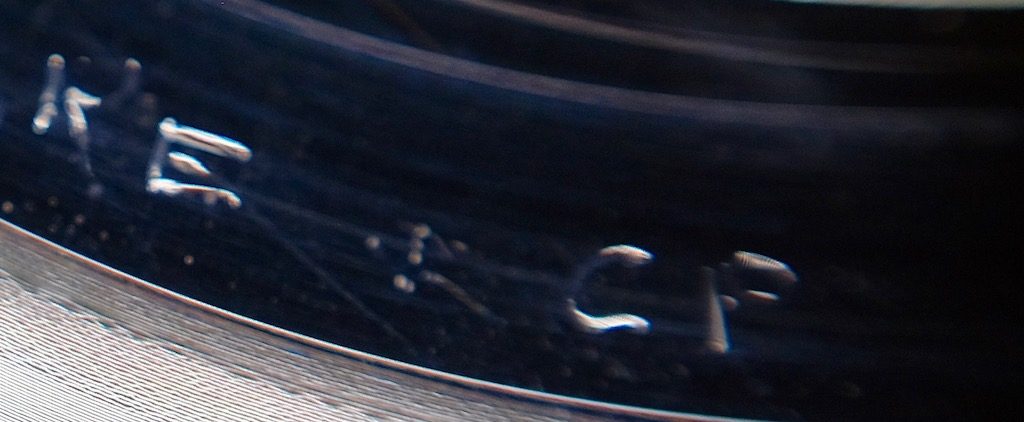
Interesting article! I have the UK single, “Tomorrow night” which was released on Island records. I saw Crazy World of Arthur Brown at the very first Isle of Wight Festival in 1968 (the very small one headlined by Jefferson Airplane) with about 7000 other people. An abiding memory was Arthur Brown trying to light his helmet at about 2 in the morning before coming on stage…… In later life he formed a painting and decorating company with the late lamented Jimmy Carl Black, an early drummer with the Mothers of Invention (“Hi, boys and girls, I’m the Indian of the group”!). Arthur currently lives in Lewes, Sussex, England, and still performs. There is a small gig on the Isle of Wight in a couple of weeks to celebrate the 50th anniversary of the first Isle of Wight Festival and Dick Taylor and Phil May of the Pretty Things, Arthur Brown and Ashley Hutchings of Fairport Convention, who all appeared at the original festival, are performing.
Ashley Hutchings of Fairport Convention (sorry, predictive text!)
fixed it for ya, Ken. My computer refuses to type Fairport Convention. It took three tries to do it in this note. The single was on Island? We should unravel that…..
Turns out that Chris Blackwell and Island pooled interest with Trojan for the Caribbean records for a while, though B&C remained separately owned. And Island withdrew from the venture thereafter. I always thought of Trojan as a competitor, but Island’s influence loomed huge….
Bill, I think I have led you up the garden path! I went into my attic to find my singles (which I haven’t played or looked at for years due to a faulty mechanism on my turntable not allowing me to select 45 rpm) and found that “Tomorrow night” is indeed on B&C. I had muddled it with something else, as it was in an Island sleeve. Sorry for any confusion – I’ll get the item out before posing, next time! Regards!
No problem. Your initial comment actually forced me to draw the connection between the Trojan label and Island-by the time I was familiar with Island I think they were competitors. Glad you enjoyed the piece though. The album really pushes my ‘heavy rock’ button.